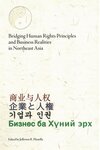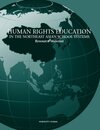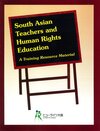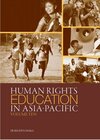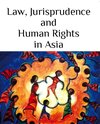The plaintiff was a Yorta Yorta man who lived in northern Victoria. He was charged with offences allegedly committed in and around Echuca. The Koori Court Division did not sit in Echuca. He applied to the Magistrates’ Court at Echuca to have his matters transferred under s4F of the Act to the Koori Court Division sitting at Shepparton. The magistrate refused the application on the basis that Echuca was the ‘proper venue’. The plaintiff sought judicial review on the basis that the decision was affected by jurisdictional error or error of law on the face of the record, and that it contravened the Charter of Human Rights and Responsibilities Act 2006 (Vic) (the Charter). Section 8(3) of the Charter relevantly provided that every person ‘has the right to equal and effective protection against discrimination’. Section 19(2)(a) provided that Aboriginal persons must not be denied the right to enjoy their identity and culture.
Section 4F of the Magistrates’ Court Act 1989 (Vic) (the Act) empowered a magistrate to transfer proceedings to the Koori Court Division of the Magistrates’ Court in certain circumstances. Section 4F(3) provided that if a proceeding was transferred from one venue to another, ‘the transferee venue is the proper venue of the Courtfor the purposes of this Act’.
Consideration of s32 of the Charter: (a) The interpretative principle contained in s 32(1) of the Charter meant that the proper exercise of the discretion contained in s4F(2) of the Act required consideration of relevant human rights, being, in this case,the third limb of s8(3) and s19(2)(a). [12], [78].(b) Section 4F(2) of the Act could be interpreted compatibly with human rights by taking into account the purposes of the Koori Court legislation. [152].
https://victorianreports.com.au/judgment/56-VR-480
Indigenous People
The State of Queensland submitted to the primary judge that its successive legislative regimes since 1877 had abrogated or extinguished any pre-existing native title rights to fish for commercial purposes and replaced them with rights conferred only upon those who held the necessary statutory licences. The legislative history was said to have resulted in the extinguishment of any rights to take or use the resources of the claim area for trading or commercial fishing purposes.
The Commonwealth submission, reflecting that of the State, pointed to a history of increasingly comprehensive management regimes and the retention by the Crown exclusively for itself and its agencies of the capacity to manage the seas, including those in the claim area. Fisheries management had focused upon commercial fishing, reflecting the treatment of fisheries in the sea as a public resource and concerns about the long-term development and sustainability of the fishing industry.
The appellant submitted before the primary judge that the relevant native title right was the right to access and take marine resources and not a differentiated right to take resources for trade or commercial purposes. Neither the State nor the Commonwealth argued that the native title right to take marine resources had itself been extinguished. The appellant submitted that the effect of the successive regulatory schemes was to regulate the exercise of native title rights and not to extinguish them or their incidents. There was nothing to suggest, and no party suggested, that native title holders had ever been precluded from applying for licences to fish for commercial purposes under the successive regimes or are now precluded from doing so.
Court ruling:
Rights, extinguishment and statutory construction
"Extinguishment" in relation to native title refers to extinguishment or cessation of rights. Such extinguishment of rights in whole or in part is not a logical consequence of a legislative constraint upon their exercise for a particular purpose, unless the legislation, properly construed, has that effect. To that proposition may be added the general principle that a statute ought not to be construed as extinguishing common law property rights unless no other construction is reasonably open. Neither logic nor construction in this case required a conclusion that the conditional prohibitions imposed by successive fisheries legislation in the determination area were directed to the existence of a common law native title right to access and take marine resources for commercial purposes. In any event, nothing in the character of a conditional prohibition on taking fish for commercial purposes requires that it be construed as extinguishing such a right.
Recognition of the distinction between a broadly stated right and its exercise in particular ways or for particular purposes is implicit in the legislative scheme of the NT Act dealing with extinguishment. The NT Act contemplates the existence of legislative or executive acts which "affect" native title rights and interests by constraint or restriction but do not extinguish them. Section 227 provides:
"An act affects native title if it extinguishes the native title rights and interests or if it is otherwise wholly or partly inconsistent with their continued existence, enjoyment or exercise."
http://eresources.hcourt.gov.au/showCase/2013/HCA/33
The Petition for Prohibition and Mandamus before the Court challenges the constitutionality of (1) Republic Act No. [RA] 7942 (The Philippine Mining Act of 1995); (2) its Implementing Rules and Regulations (DENR Administrative Order No. [DAO] 96-40); and (3) the FTAA dated March 30, 1995,6 executed by the government with Western Mining Corporation (Philippines), Inc. (WMCP).
On January 27, 2004, the Court en banc promulgated its Decision8 granting the Petition and declaring the unconstitutionality of certain provisions of RA 7942, DAO 96-40, as well as of the entire FTAA executed between the government and WMCP, mainly on the finding that FTAAs are service contracts prohibited by the 1987 Constitution.
The Decision struck down the subject FTAA for being similar to service contracts,9 which, though permitted under the 1973 Constitution,10 were subsequently denounced for being antithetical to the principle of sovereignty over our natural resources, because they allowed foreign control over the exploitation of our natural resources, to the prejudice of the Filipino nation.
Subsequently, respondents filed separate Motions for Reconsideration. In a Resolution dated March 9, 2004, the Court required petitioners to comment thereon. In the Resolution of June 8, 2004, it set the case for Oral Argument on June 29, 2004.
What is the proper interpretation of the phrase Agreements Involving Either Technical or Financial Assistance contained in paragraph 4 of Section 2 of Article XII of the Constitution (National Economy and Patrimony - The President may enter into agreements with foreign-owned corporations involving either technical or financial assistance for large-scale exploration, development, and utilization of minerals, petroleum, and other mineral oils...)?
Court ruling:
This Court cannot but be mindful that any decision rendered in this case will ultimately impact not only the cultural communities which lodged the instant Petition, and not only the larger community of the Filipino people now struggling to survive amidst a fiscal/budgetary deficit, ever increasing prices of fuel, food, and essential commodities and services, the shrinking value of the local currency, and a government hamstrung in its delivery of basic services by a severe lack of resources, but also countless future generations of Filipinos.
For this latter group of Filipinos yet to be born, their eventual access to education, health care and basic services, their overall level of well-being, the very shape of their lives are even now being determined and affected partly by the policies and directions being adopted and implemented by government today. And in part by the this Resolution rendered by this Court today.
Verily, the mineral wealth and natural resources of this country are meant to benefit not merely a select group of people living in the areas locally affected by mining activities, but the entire Filipino nation, present and future, to whom the mineral wealth really belong. This Court has therefore weighed carefully the rights and interests of all concerned, and decided for the greater good of the greatest number. JUSTICE FOR ALL, not just for some; JUSTICE FOR THE PRESENT AND THE FUTURE, not just for the here and now.
https://lawphil.net/judjuris/juri2004/dec2004/gr_127882_2004.html
Two non-indigenous villagers challenged the validity of the village representative election arrangements in the villages they lived in. This case involved a number of constitutional and administrative law issues, but the digest below will only focus on issues relating to the anti-discrimination ordinances.
Court’s decision
First, in the villages concerned, while non-indigenous females married to indigenous villagers had the right to vote, but non-indigenous males married to indigenous villagers were not entitled to such right, the Court held that this amounted to sex discrimination against men under s. 5 (1) , s. 6(1) and s. 35 (3) of the SDO.
Second, due to the above arrangement, married non-indigenous females enjoyed the right to vote, whereas single non-indigenous females did not. This amounted to marital status discrimination under s. 7 (1)(a) and s. 35 (3) of the SDO.
Third, in order to have the right to vote, married female indigenous villagers must have resided in the village for seven years while there was no such requirement for married male indigenous villagers. Fourth, female indigenous villagers were excluded from standing as candidates in elections, while there was no such prohibition against male indigenous villagers. These amounted to sex discrimination against women under s. 5 (1) and s. 35 (3) of the SDO.
The Court of Final Appeal restated the following general legal principles which are relevant to all set discrimination cases:
In considering whether a particular arrangement is discriminatory or not, the Court will adopt the “but for” test, to look at whether there is a less favourable treatment on the ground of a person’s sex. For example, if a female would have received the same treatment as a male but for her sex, then there is discrimination.
The intention or motive of the defendant to discriminate is not a necessary condition to liability, though it may be a relevant consideration. A prima facie case of discrimination will arise when a particular arrangement has the effect of favouring some persons because of his or her sex or marital status.
https://www.eoc.org.hk/eoc/graphicsfolder/showcontent.aspx?content=significant%20court%20cases#sd_c1
Sardar Sarovar Dam was constructed on Narmada river that run in four States (Gujarat, Madhya Pradesh, Maharashtra and Rajasthan) in India starting in 1987. In April 1994, Narmada Bachao Andolan filed a writ petition inter alia praying that the Union of India and other respondents should be restrained from proceeding with the construction of the dam and they should be ordered to open the aforesaid sluices. Narmada Bachao Andolan cited displacement and rehabilitation problem that the project would cause. It called for further study as well as postponement of construction pending completion of such study. It has also argued for reduction in the height of the dam so as to reduce the extent of submergence and the consequent displacement.
The court discussed the petitioner's argument:
the forcible displacement of tribals and other marginal farmers from their land and other sources of livelihood for a project which was not in the national or public interest was a violation of their fundamental rights under Article 21 of the Constitution of India read with ILO Convention 107 to which India is a signatory. Elaborating this contention, it was submitted that this Court had held in a large number of cases that international treaties and covenants could be read into the domestic law of the country and could be used by the courts to elucidate the interpretation of fundamental rights guaranteed by the Constitution. Reliance in support of this contention was placed on Gramaphone Co. of India Ltd. Vs. B.B. Pandey, 1984(2) SCC 534, PUCL Vs. Union of India, 1997(3) SCC 433 and CERC Vs. Union of India, 1995(3) SCC 42. In this connection, our attention was drawn to the ILO Convention 107 which stipulated that tribal populations shall not be removed from their lands without their free consent from their habitual territories except in accordance with national laws and regulations for reasons relating to national security or in the interest of national economic development. It was further stated that the said Convention provided that in such cases where removal of this population is necessary as an exceptional measure, they shall be provided with lands of quality at least equal to that of lands previously occupied by them, suitable to provide for their present needs and future development.
The court however decided to allow the project to be completed. Among other discussions it ruled the following:
While protecting the rights of the people from being violated in any manner utmost care has to be taken that the Court does not transgress its jurisdiction. There is in our Constitutional frame-work a fairly clear demarcation of powers. The Court has come down heavily whenever the executive has sought to impinge upon the Courts jurisdiction.
At the same time, in exercise of its enormous power the Court should not be called upon or undertake governmental duties or functions. The Courts cannot run the Government nor the administration indulge in abuse or non-use of power and get away with it. The essence of judicial review is a constitutional fundamental. The role of the higher judiciary under the constitution casts on it a great obligation as the sentinel to defend the values of the constitution and rights of Indians. The courts must, therefore, act within their judicially permissible limitations to uphold the rule of law and harness their power in public interest. It is precisely for this reason that it has been consistently held by this Court that in matters of policy the Court will not interfere. When there is a valid law requiring the Government to act in a particular manner the Court ought not to, without striking down the law, give any direction which is not in accordance with law. In other words the Court itself is not above the law.
https://main.sci.gov.in/jonew/judis/17165.pdf
In June 1993 the Wik and Thayorre Peoples made a native title claim in the Federal Court for land on Cape York Peninsula. The area of land being claimed included two pastoral leases. The claimants argued that native title and pastoral rights had coexisted in the area for many years, demonstrating that it was possible for the two sets of rights to apply to the one piece of land. The judgment of the Federal Court was that the pastoral leases had extinguished native title, a decision that the plaintiffs appealed in the High Court.
In 1996, by a four to three majority, the High Court ruled that a pastoral lease does not give exclusive possession of the land to the pastoralist and therefore does not completely extinguish native title. The ruling stipulated that the two sets of rights to land can coexist, but where there is a conflict, the rights of the pastoral lease will take precedence.
Note:
The Howard Liberal-National government introduced legislation to amend the Native Title Act, known as the Wik 10-point plan. The amendments made extensive changes to the original Native Title Act. They asserted the rights of landholders and lessees, gave more power to state governments for extinguishment and imposed a ‘registration test’ on claimants. The registration test meant that each native title application had to meet strict criteria before being assessed. The bill was passed in 1997.
Sir Howard Gibbs, Legal Heritage Centre
https://legalheritage.sclqld.org.au/wik-v-queensland
Cases
Mabo and others v. Queensland (No. 2) [1992] HCA 23; (1992) 175 CLR 1 F.C. 92/014 (3 June 1992)
Mabo v. Queensland (No. 1) (1988) 166 CLR 186 F.C. 88/062 Summary of proceedings: AUSTLII WebsiteLegislationNative Title Act 1993 (Cth)
Background
On 20 May 1982, Eddie Koiki Mabo, Sam Passi, David Passi, Celuia Mapo Salee and James Rice began their legal claim for ownership of their lands on the island of Mer in the Torres Strait between Australia and Papua New Guinea. The High Court required the Supreme Court of Queensland to determine the facts on which the case was based but while the case was with the Queensland Court, the State Parliament passed the Torres Strait Islands Coastal Islands Act which stated 'Any rights that Torres Strait Islanders had to land after the claim of sovereignty in 1879 is hereby extinguished without compensation'.The challenge to this legislation was taken to the High Court and the decision in this case, known as Mabo No. 1, was that the Act was in conflict with the Commonwealth Racial Discrimination Act of 1975 and was thus invalid. It was not until 3 June 1992 that Mabo No. 2 was decided. By then, 10 years after the case opened, both Celuia Mapo Salee and Eddie Mabo had died.Six of the judges agreed that the Meriam people did have traditional ownership of their land, with Justice Dawson dissenting from the majority judgment. The judges held that British possession had not eliminated their title and that 'the Meriam people are entitled as against the whole world to possession, occupation, use and enjoyment of the lands of the Murray Islands'.
Following the High Court decision in Mabo No. 2, the Commonwealth Parliament passed the Native Title Act in 1993, enabling Indigenous people throughout Australia to claim traditional rights to unalienated land.(Source: Documenting a Democracy: Mabo v Queensland)
Legal issues
The first question was whether the Meriam people did have traditional rights and interests in the land of the Murray Islands and, if so, whether Australian law would protect those rights and interests. If native title is recognised, are Indigenous people entitled to compensation if their land is taken away?
The High Court held by a majority of 6-1 that the Meriam people were entitled, as against the whole world, to the possession, use, occupation and enjoyment of (most of) the land of the Murray Islands. The six judges in the majority rejected the traditional doctrine that Australia was terra nullius ('land belonging to no-one') at the time of European settlement.
Rather the majority found that the common law of Australia recognises a form of native title to land. Pre-existing rights and interests in land survived colonisation and still survives today:
- where the people have maintained their connection with the land; and
- where their title has not been extinguished by legislation or any action of the executive arm of the government inconsistent with that title.
Neither the establishment of the colonies nor Queensland's 1879 annexation of the Murray Islands extinguished the Meriam people's native title. However, native title could still be readily extinguished by government actions inconsistent with respect for native title and, before 1975, there was no right to compensation. The relevance of the RDA is that it requires fair and just compensation to be paid for loss of native title after 1975. Failure to pay compensation would be racially discriminatory because other land holders are entitled to compensation.
(Source: Human Rights & Equal opportunities Commission Website: Racial Discrimination/ Landmark Cases under the Racial Discrimination Act 1975)
After the proceedings commenced the Queensland Government passed the Queensland Coast Islands Declaratory Act in 1985. This Act purported to extinguish whatever rights and interests the Meriam people might have had under their traditional law. It also purported to extinguish traditional rights retrospectively (with effect from 1879 when Queensland annexed the islands) and without compensation. The Murray Islanders argued, among other things, that the 1985 Queensland Act denied them equality before the law and the enjoyment of their right to own property and arbitrarily deprived them of their property. These are human rights protected by article 5 of the International Convention on the Elimination of All Forms of Racial Discrimination.
By a majority of 4-3, the High Court held that the Queensland Coast Islands Declaratory Act was invalid because it was inconsistent with the RDA. It discriminated against the Meriam people by purporting to extinguish any rights they might have in their land.
(Source: Human Rights & Equal opportunities Commission Website: Racial Discrimination/ Landmark Cases under the Racial Discrimination Act 1975)
"The common law does not necessarily conform with international law, but international law is a legitimate and important influence on the development of the common law, especially when international law declares the existence of universal human rights. A common law doctrine founded on unjust discrimination in the enjoyment of a civil and political rights demands reconsideration. It is contrary both to international standards and to the fundamental values of our common law to entrench a discriminatory rule which, because of the supposed position on the scale of social organisation of the indigenous inhabitants of a settled colony, denies them a right to occupy their traditional lands.” Brennan J in Mabo v Queensland (From: Does Australia Need a Bill of Rights? Justice David Malcolm AC)“
...the Court did not overturn anything of substance, but merely propounded white domination and superiority over Aborigines by recognising such a meagre Aboriginal form of rights over land. The judges did little more than ease their own conscience of the guilt they so correctly feel for maintaining white supremacy” Michael Mansell in Foley, Gary: The Road to Native Title: The Aboriginal Rights Movement and the Australian Labor Party 1973 -1996
The decision in Mabo
The evidence in Mabo showed that:
- the Murray Islands, which lie in the Torres Strait, had a total land area is of the order of 9 square kilometres. The biggest is Mer (known also as Murray Island), oval in shape about 2.79 kms long and about 1.65 kms across. A channel about 900 m wide separates Mer from the other two islands, Dauar and Waier, which lie closely adjacent to each other to the south of Mer;
- the people who were in occupation of these Islands before first European contact and who have continued to occupy those Islands to the present day are known as the Meriam people;
- although outsiders, relatively few in number, have lived on the Murray Islands from time to time and worked as missionaries, government officials, or fishermen, there has not been a permanent immigrant population;
- anthropological evidence showed that the present inhabitants of the Islands were descended from the people in occupation at sovereignty;
- the people lived in groups of huts strung along the foreshore or strand immediately behind the sandy beach. They still do although there has been a contraction of the villages and the huts are increasingly houses. The cultivated garden land was and is in the higher central portion of the island. There seems however in recent times a trend for cultivation to be in more close proximity with habitation. The groups of houses were and are organised in named villages. It is far from obvious to the uninitiated, but is patent to an islander, that one is moving from one village to another. The area occupied by an individual village is, even having regard to the confined area on a fairly small island which is in any event available for ‘village land’, quite small. Garden land is identified by reference to a named locality coupled with the name of relevant individuals if further differentiation is necessary. The Islands are not surveyed and boundaries are in terms of known land marks such as specific trees or mounds of rocks;
- since annexation an Island Court, the Island Council, a police force and other government agencies have been introduced to the Islands. Land disputes were dealt with by the Island Court in accordance with the custom of the Meriam people. Thus, even in cases where there may have been an absence of a law to determine a point in contest between rival claimants, such a contest was capable of being determined according to the Meriam people’s laws and customs.
The court held that the Crown's title to the Mer Islands was held subject to the rights and interests of the Mer Islanders possessed under the traditional laws acknowledged and the traditional customs observed by the indigenous inhabitants. The court also noted that, because the native title is held in accordance with the local native system:
- it is only capable of entitlement and enjoyment within that system, and hence it is not capable of alienation or assignment;
- it does not constitute a legal or beneficial estate or interest in the land.
Having regard to the evidence led in Mabo, and to the principles expressed in Amodu Tijani, the decision essentially involved the application of the facts as found in accordance with well established legal principle.
However Brennan J, with whom Mason CJ and McHugh J agreed, made some observations by way of obiter as to the circumstances in which native title rights and interests could be lost subsequent to European settlement, saying that:'Where a clan or group has continued to acknowledge the laws and (so far as practicable) to observe the customs based on the traditions of that clan or group, whereby their traditional connection with the land has been substantially maintained, the traditional community title of that clan or group can be said to remain in existence'
(Source: Allens Arthur Robinson website: Native Title Roundup: Mabo and Beyond)
Three plaintiffs - Mabo, Pass and Rice - sought declarations as to their entitlement and that of the Meriam people as a whole to land known.as the Murray Islands in the Torres Strait. The plaintiffs alleged that the Meriam people had, since time immemorial, inhabited and exclusively possessed the Islands.
They alleged that, upon the annexation by the Crown of the islands on 1 August 1879, the land became part of the colony of Queensland, but that the Crown's sovereignty was subject to the land rights of the Meriam people based on local custom and traditional native title.
Six of the seven members of the High Court (Mason CJ, Brennan, Deane, Toohey, Gaudron and McHugh JJ) agreed that the common law of Australia recognizes a form of native title which, where it has not been extinguished, reflects the entitlement of the indigenous inhabitants to their traditional lands in accordance with their laws and customs.
The majority accepted that when the Murray Islands were annexed in 1879 the radical or ultimate title vested in the Crown; this ownership of the Murray Islands was, however, qualified and reduced by the communal native title of the Murray Islanders. Dawson J in dissent concluded that on annexation the vesting of the radical title in the Crown was incompatible with the continued existence in precisely the same form of any preexisting rights; in his Honour's view, native title was thereafter a form of permissive occupancy at the will of the Crown. The Court declared that the Meriam people were entitled as against the whole world to possession, occupation, use and enjoyment of the lands of the Murray Islands, excluding some land subject to particular Crown leases.
The decision of the Court to recognise the existence of native title has significant implications in other parts of Australia. While the claim of the Meriam people in the Mabo case was strong in the sense that they had shown an effective system of title which saw individual lots of land handed down from one generation to the next, and cultivation of these lots by families and individuals, there is nothing in the decision which would preclude the recognition of native title in mainland Aboriginal tribes where the indigenous inhabitants have traditionally maintained more nomadic lifestyles. Such native title can be extinguished by legislation, or by an appropriation by the Crown which is inconsistent with the continuing right to enjoy native title, such as appropriation for uses such as roads, railways, and other permanent public works. The majority of the Court (Deane, Gaudron and Toohey JJ dissenting) found that in the event that native title had been extinguished, no entitlement to compensation would arise.
Linda Pearson Macquarie University Sydney, Native Title Recognized By High Court, Case Notes
http://www5.austlii.edu.au/au/journals/AUEnvLawNews/1992/70.pdf

